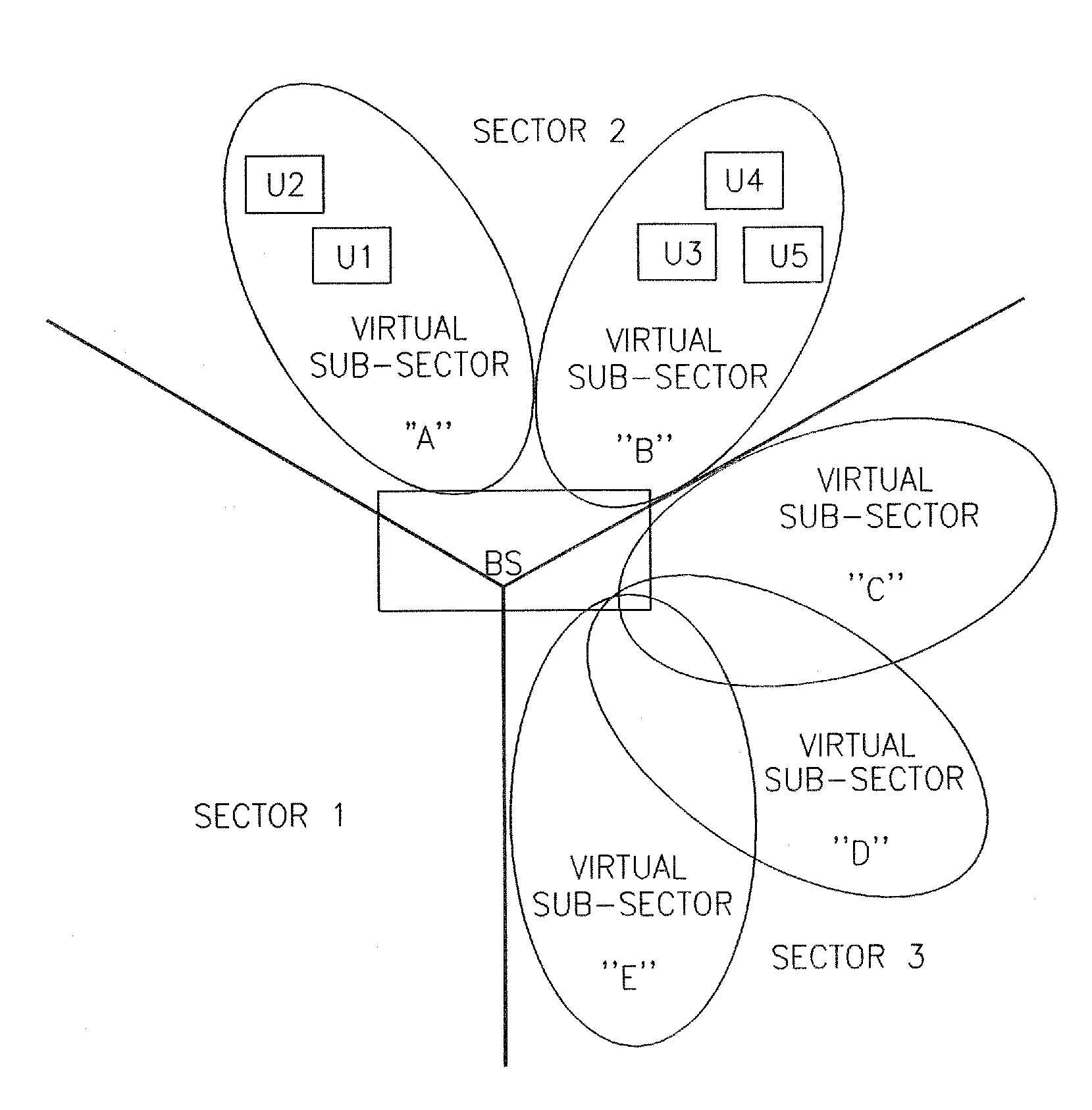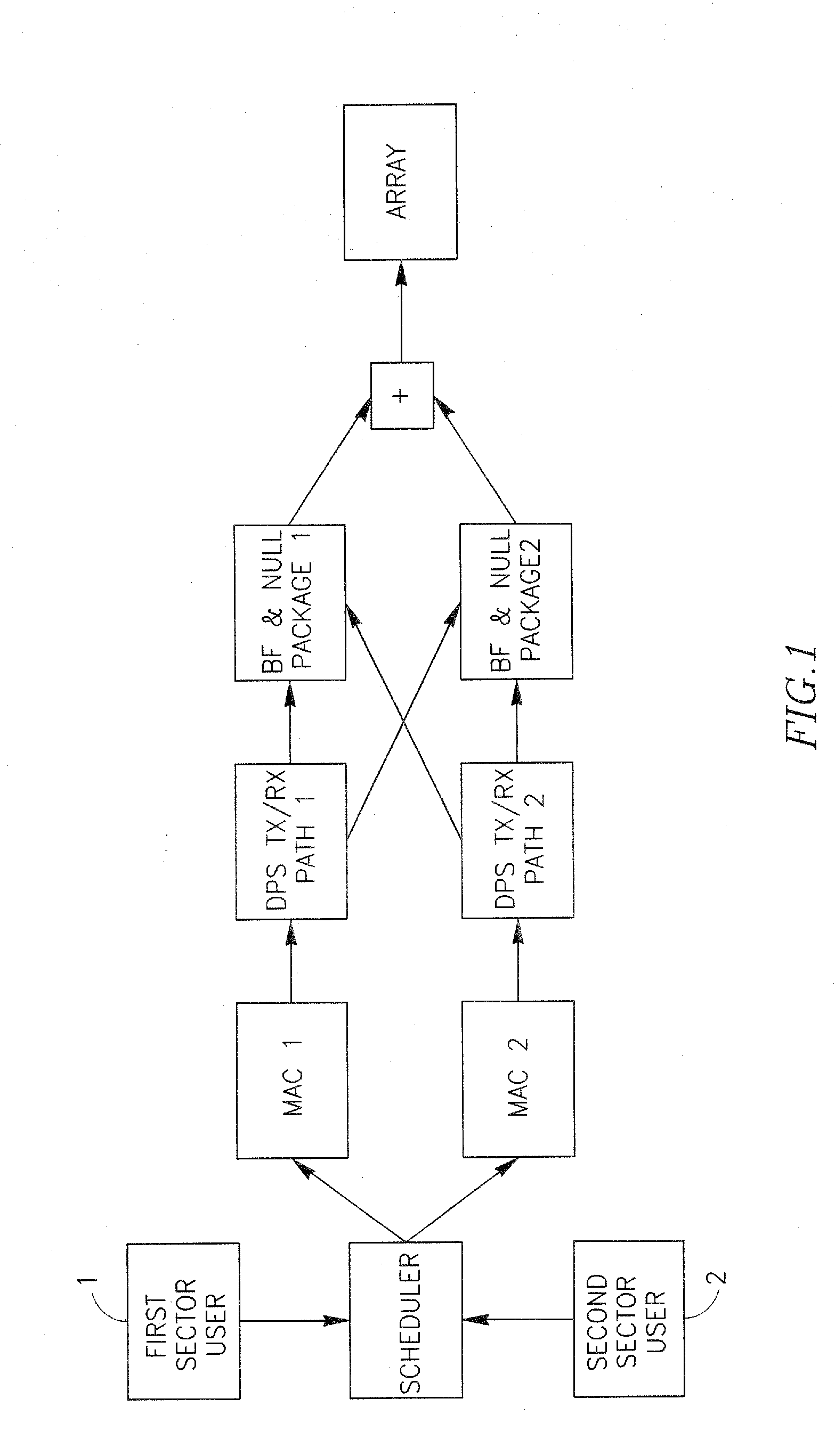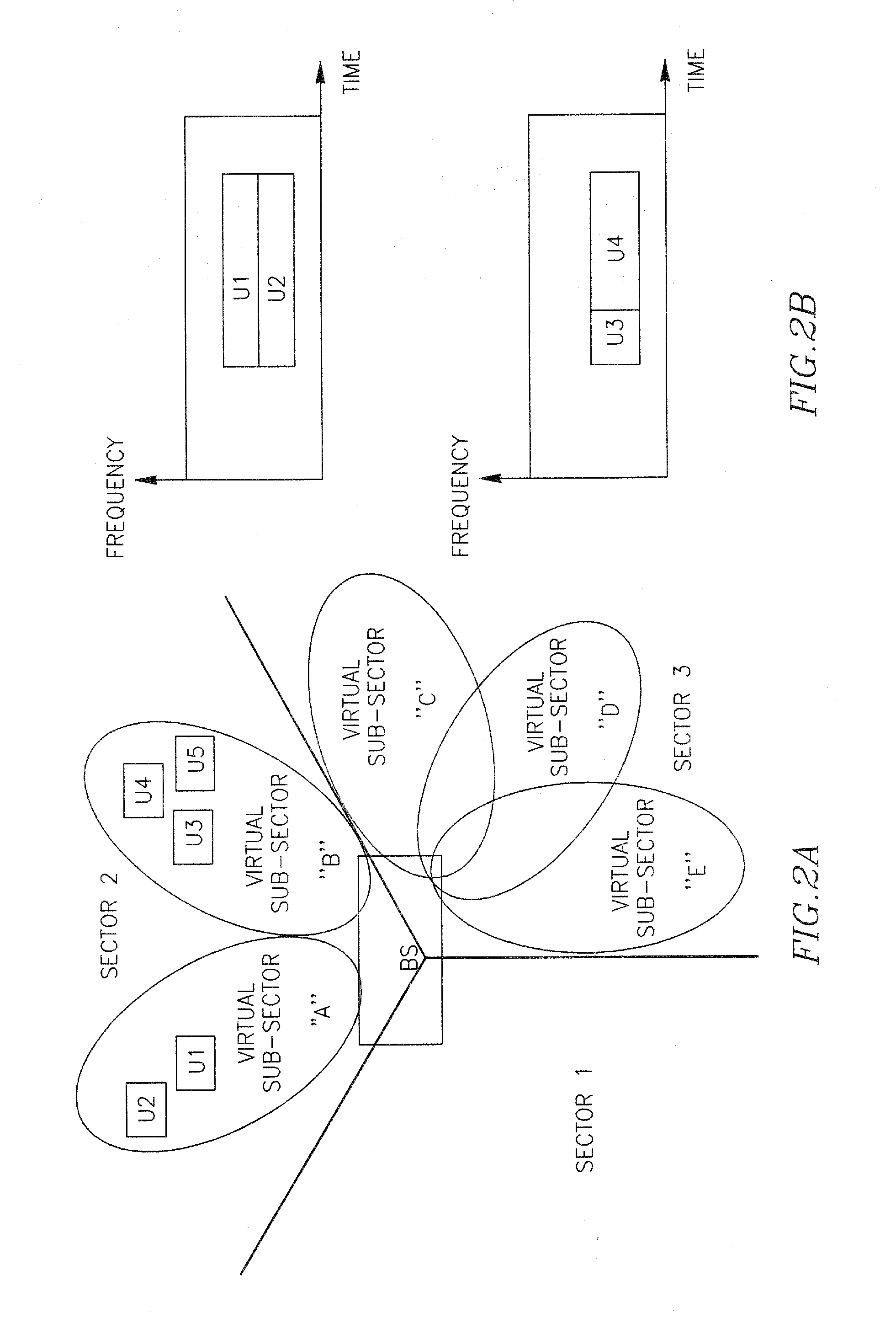Wireless communications in a multi-sector network
a multi-sector network and wireless communication technology, applied in the field of wireless communication in a multi-sector network, can solve the problems of delay in transmission, limited improvement in throughput, and several drawbacks in the method
- Summary
- Abstract
- Description
- Claims
- Application Information
AI Technical Summary
Benefits of technology
Problems solved by technology
Method used
Image
Examples
Embodiment Construction
[0043]A better understanding of the present invention is obtained when the following non-limiting detailed description is considered in conjunction with the following drawings in which:
[0044]FIG. 1 describes an example of an embodiment of the present invention for using the resources of a single physical sector (i.e. a single antenna array) to generate two (Nsec=2) virtual sub-sectors. For WiMax typically the number of virtual sub-sectors is Nsec<=3.
[0045]Each path in FIG. 1 illustrates one virtual sub-sector. For example let us assume that user 1 is scheduled on virtual sub-sector 1, and is therefore handled by path 1, while user 2 is scheduled on virtual sub-sector 2 and is handled by path 2. The scheduler, which is shared by the two virtual sub-sectors, generates two users allocations maps (one for each virtual sub-sector), which are then processed by the MAC entities (MAC1 and MAC2). The scheduler needs to schedule transmissions to / from pairs of users (say user 1 and user 2) whi...
PUM
 Login to View More
Login to View More Abstract
Description
Claims
Application Information
 Login to View More
Login to View More - R&D
- Intellectual Property
- Life Sciences
- Materials
- Tech Scout
- Unparalleled Data Quality
- Higher Quality Content
- 60% Fewer Hallucinations
Browse by: Latest US Patents, China's latest patents, Technical Efficacy Thesaurus, Application Domain, Technology Topic, Popular Technical Reports.
© 2025 PatSnap. All rights reserved.Legal|Privacy policy|Modern Slavery Act Transparency Statement|Sitemap|About US| Contact US: help@patsnap.com



